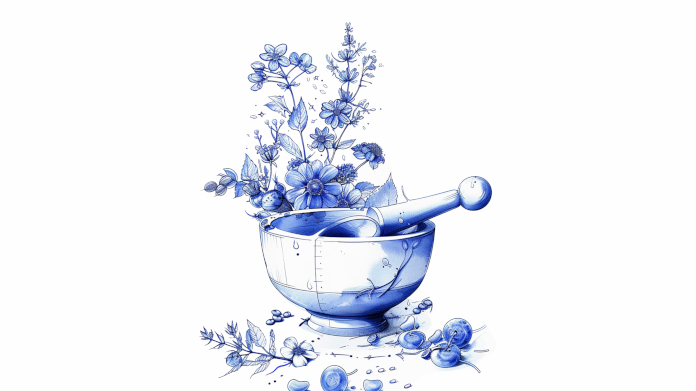Migraine: a summary in 7 questions
Painful and debilitating, migraine is a subject which raises many questions. What exactly is a migraine? What are the symptoms? How can you avoid an attack? And what treatments are available?

What exactly is a migraine?
What constitutes a migraine is still the subject of widespread debate. However, health professionals agree that it can be defined as a form of headache, which means it is characterised by repeated episodes of pain in the head. Scientific studies on the subject suggest that such attacks may be the result of an inflammatory reaction in the brain which is why migraines are sometimes defined as a neurological problem.
What are the symptoms of a migraine?
As mentioned, migraine generally manifests in recurrent headaches. These can last anything from 4 to 72 hours and pain may be accompanied by other symptoms. Often, people suffering a migraine attack cannot bear noise or light. They may feel irritable, have trouble concentrating, and experience nausea and vomiting.
How can you recognise migraine pain?
A migraine can often be confused with a passing headache but their characteristics are actually quite different. While a one-off headache usually causes generalised but tolerable pain, the pain of migraine is intense and difficult to bear, and normally affects just one side of the head. It is also described as throbbing or ‘pounding’ – as if your heart is beating in your head. The sensation is sometimes likened to ‘hammer blows’ in the head.
Who is affected by migraines?
It’s thought that three out of every ten people are affected by migraine, though in many cases, the condition remains undiagnosed. This is because migraine often starts at puberty but remains dormant for many years. Statistics show that initial episodes are most common among those aged between 35 and 45 years, but they can also occur in adolescents, young adults and the elderly. Women are significantly more likely to suffer than men: on average, it’s believed that migraine affects three women for every man.
What causes migraine?
The causes of migraine remain poorly understood. Scientific studies appear to confirm the existence of a genetic predisposition, with an elevated risk if one or both parents are migraine sufferers. It may also be linked to other factors: emotional changes, hormonal imbalances, sleep problems, poor dietary habits – these are all elements that can trigger a migraine attack.
How can you prevent a migraine?
As mentioned, migraines are potentially linked to a number of factors; by identifying them and adopting good habits, it is thus entirely possible to minimise attacks. For example, it’s important to ensure you get sufficient, good quality sleep, and to eat a healthy, balanced diet since nutritional deficiencies, particularly in vitamin D and magnesium, may also be a cause of migraine.
How can migraine be treated?
There are generally two distinct types of treatment for migraine: the sort employed during an attack, and that taken over the longer term. The first is designed to relieve the symptoms and the second to reduce the rate of attacks. Frequently recommended by health professionals, these two types of treatment may be based on various active principles. Those from natural sources have been growing in popularity in recent years and include, in particular, butterbur extract, with natural, migraine-relieving efficacy confirmed by several studies. The use of plants with anti-inflammatory properties, such as those included in the product InflaRelief Formula, are also popular with migraine sufferers.
Keywords
3 Days
Quality products
Quality products , efficient and effective customer service. You can’t ask more
CLaudia
9 Days
Good quality product and customer service.
So far, I'm liking this product, and the customer service was very good.
ELZL
16 Days
The products I use are excel·lent
The products I use are excel·lent
ROSAS Josep Maria
24 Days
Delivery is prompt and I never saw a…
Delivery is prompt and I never saw a quality problem with the manufacturing. It is not possible to assess efficacy on a personal basis, since too many factors come into play. Efficacy can only be assessed statistically with a sufficient number of cases.
Roger De Backer
25 Days
I collaborates with the Supersmart…
I collaborates with the Supersmart more than 10 years. Every thing is going good. Quality of the things is good. Delivery comes in time. Five stars definitely !!!
Oleksiy
25 Days
All good
Simple, frictionless site, easy ordering, good delivery updates and execution.
Chris Robbins
27 Days
I feel better
I feel better
Peter Ammann
27 Days
Prompt delivery
Prompt delivery
JAKUB Radisch
28 Days
My new go-to for top quality supplements!
I am buying more and more of my supplements from this superb, high quality company. Cannot recommend it enough. Plus, excellent customer service with a quick, helpful team and speedy deliveries. Highly recommend Supersmart!
Cecilie H.
32 Days
SUPERSMART WHAT ELSE👍
SUPERSMART WHAT ELSE👍
DIEDERLE Christophe
35 Days
Excellent quality products with…
Excellent quality products with innovative formulas, as someone who has been suffering with acid reflux, these supplements have been lifesavers.
Oriana Moniz
35 Days
high quality supplement!
high quality supplement!
GALANT
36 Days
Good service prompt delivery
Good service prompt delivery
Mrs Marcella Reeves
40 Days
I like your clear explanation
I like your clear explanation. And how to make a choice of products for a specific health problem
Ingrid
47 Days
Great product and it arrives quickly.
Great product and it arrives quickly.
SOMMARIVA Gianni



